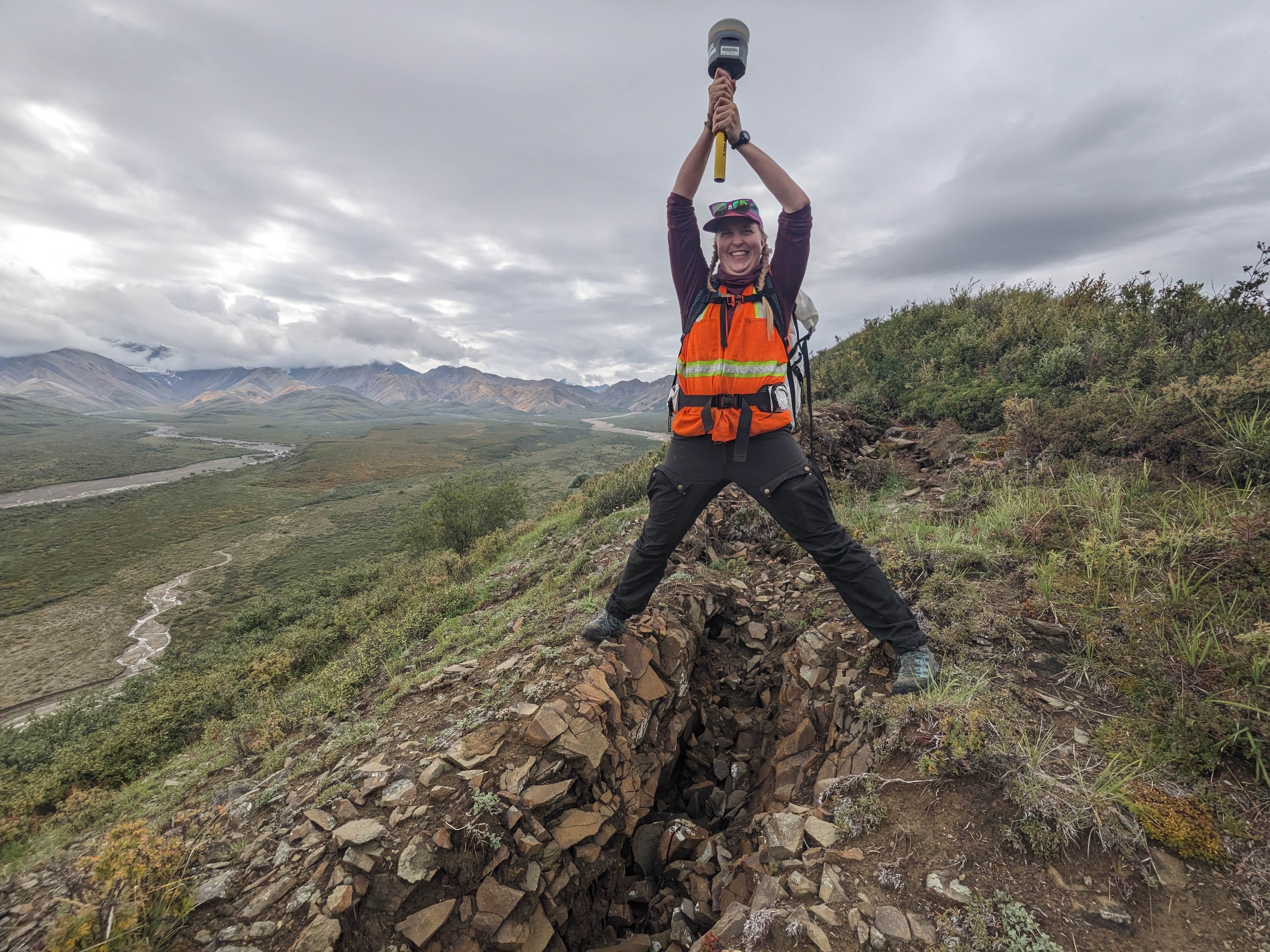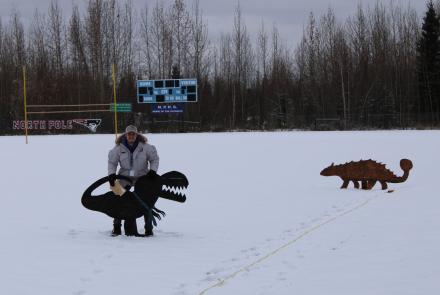Q&A with Kyra Bornong, 2024 UAF Geophysical Institute Schaible Fellowship recipient
GI: Tell us a bit about yourself (Hometown, prior education, whether you are new to Alaska)
Kyra Bornong: I grew up in Minnesota and studied geology at Carleton College. After graduating, I spent a few years working for NOLS and playing in the mountains in Idaho and other parts of the Western U.S. before moving to Pocatello, Idaho, and earning a master’s degree in geology from Idaho State University, where I studied landslides in Yellowstone National Park. Last summer, I came to Alaska for the first time as a Scientists in Parks intern in Denali National Park. I moved from Minnesota to Fairbanks this May.
Q: Anything else you’d like us to tell us about yourself (hobbies, family, etc.)?
A: I love recreating outside — hiking, canoeing, packrafting, Nordic skiing and rock climbing. I’m also an avid knitter. This spring I was a finalist in an international sock knitting competition called Sock Madness.
Q: What is your area of study?
A: I am interested in how Alaska’s alpine landscapes are changing with climate change, with a particular focus on interactions between landslides and other hillslope processes and permafrost. I want to compare sites across the Brooks Range and the Alaska Range to assess differences in landslide behavior between areas of discontinuous and continuous permafrost. Observations of hillslope permafrost conditions and how they relate to landslides are pretty sparse in Alaska (they’re hard to get to!), and I am excited to fill in some of those knowledge gaps.
Q: How did you become interested in that area of study?
A: I really like studying Earth surface processes because they can have direct impacts on the way humans interact with landscapes. Working in Denali last summer really piqued my interest in permafrost and how climate change is modifying landscapes in Alaska. One of the biggest management issues in the park right now is the Pretty Rocks Landslide, which is a permafrost-influenced landslide whose acceleration in recent years, likely influenced by climate change, forced the Park Service to close half of the single road in the park.
Pretty Rocks is fairly unique within the broader context of landslide or permafrost studies, but I don’t think it can be a completely unique landform. I thought a lot about how it would be really cool if someone was able to identify other similar features and put them in a landscape-scale context, and I realized that someone could be me.
Q: What will your fellowship work focus on?
A: I’m working on mapping and classifying landslides in the Alaska Range and the Brooks Range with satellite imagery and InSAR (interferometric synthetic aperture radar) and will pair my remote observations with field measurements like repeat drone or GPS surveys and ground temperature profiles to understand hillslope permafrost conditions and how landslides modify those conditions and the surrounding landscape.
Q: Why study at UAF and the GI?
A: I met Dr. Louise Farquharson last summer while working in Denali. Our interests aligned, and she really encouraged me to pursue my curiosity in permafrost landslides as a Ph.D. project. The GI’s expertise in permafrost and remote sensing made it a pretty ideal place to do this work. I also figured if I want to study landscape processes in Alaska, it makes sense to live here.
Q: How important to you is this fellowship? What will it enable you to do?
A: I’m really grateful to have received the Schaible Fellowship, and I probably wouldn’t be here without it. This funding will allow me to start doing research immediately.






